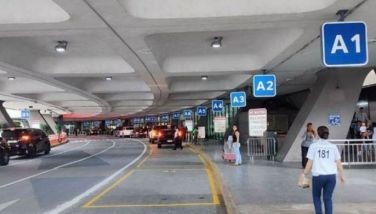Slower energy consumption defers need for additional capacity in Luzon to 2010
August 26, 2005 | 12:00am
The Luzon grid will be needing additional power capacity in 2010, instead of the earlier expected 2007, due to a slower than anticipated demand, a power industry official said.
First Generation Holdings Corp. (FirstGen) president Federico Lopez, in a presentation before members of the Philippine Business Leaders Forum (PBLF), said there was a noted decline in electricity consumption since November 2004, dampening total power demand.
"Slower consumption is temporarily buying us some time. Let us use it wisely. We project that we would need capacity addition by 2010 instead of 2007 as earlier projected for FirstGen," he said.
FirstGen is the investment vehicle of all the power generation businesses of the Lopezes.
Lopez noted that residential sales within the Manila Electric Co. (Meralco) franchise areas have been on a decline since the latter part of last year or an average decline of two percent since November 2004.
Lopez anchored his assumption on lower gross domestic product (GDP) growth rate starting 2006-2007. Last year, FirstGen’s internal GDP target was five percent.
According to Lopez, their latest projections are also based on an elasticity factor of one, which means that every one-percent GDP growth equals one- percent peak demand growth.
He noted that the growth in power demand for the past months was driven by the commercial sector and no longer manufacturing-led growth. "With the current economic situation, industries are thinking carefully about expanding their operations. Also, while there is still growth, the level of growth is not high."
But Lopez pointed out that despite the dampened power demand, the government and the private sector should not be remiss of the need to put up more capacity to avoid a power crisis in the future.
"It should be noted that it takes about four to five years to construct a power plant. It just created a little leeway but as we get closer to 2010, we need to address the impending problem of power shortage," he said.
Lopez has also identified a number of major challenges that confront the power sector such as the continuing rise fuel costs worldwide.
He noted that fuel accounts for roughly 30 to 60 percent of the total electricity rate.
"Given the Philippines’ high dependence on imported fuels for power generation, the country will have difficulty offering electricity rates comparative with our Asian countries," he said.
He said the tax and royalty burden is ironically heavier on indigenous fuels as opposed to that on imported ones. "This also distorts competition among power generators," he added.
First Generation Holdings Corp. (FirstGen) president Federico Lopez, in a presentation before members of the Philippine Business Leaders Forum (PBLF), said there was a noted decline in electricity consumption since November 2004, dampening total power demand.
"Slower consumption is temporarily buying us some time. Let us use it wisely. We project that we would need capacity addition by 2010 instead of 2007 as earlier projected for FirstGen," he said.
FirstGen is the investment vehicle of all the power generation businesses of the Lopezes.
Lopez noted that residential sales within the Manila Electric Co. (Meralco) franchise areas have been on a decline since the latter part of last year or an average decline of two percent since November 2004.
Lopez anchored his assumption on lower gross domestic product (GDP) growth rate starting 2006-2007. Last year, FirstGen’s internal GDP target was five percent.
According to Lopez, their latest projections are also based on an elasticity factor of one, which means that every one-percent GDP growth equals one- percent peak demand growth.
He noted that the growth in power demand for the past months was driven by the commercial sector and no longer manufacturing-led growth. "With the current economic situation, industries are thinking carefully about expanding their operations. Also, while there is still growth, the level of growth is not high."
But Lopez pointed out that despite the dampened power demand, the government and the private sector should not be remiss of the need to put up more capacity to avoid a power crisis in the future.
"It should be noted that it takes about four to five years to construct a power plant. It just created a little leeway but as we get closer to 2010, we need to address the impending problem of power shortage," he said.
Lopez has also identified a number of major challenges that confront the power sector such as the continuing rise fuel costs worldwide.
He noted that fuel accounts for roughly 30 to 60 percent of the total electricity rate.
"Given the Philippines’ high dependence on imported fuels for power generation, the country will have difficulty offering electricity rates comparative with our Asian countries," he said.
He said the tax and royalty burden is ironically heavier on indigenous fuels as opposed to that on imported ones. "This also distorts competition among power generators," he added.
BrandSpace Articles
<
>
- Latest
- Trending
Trending
Latest






























